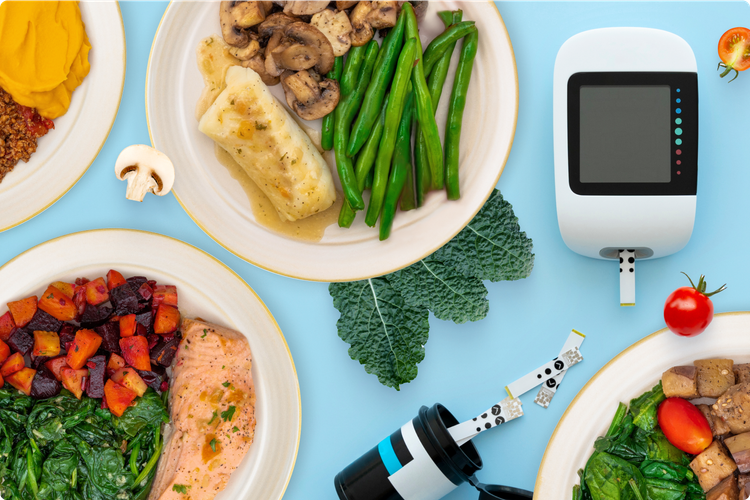
science
Understanding the Glycemic Index: A Vital Tool for Diabetes Management
Understanding the Glycemic Index (GI) may simplify the process of managing blood sugar. The GI ranks carbohydrates based on their effect on blood glucose levels. The GI is a numerical system that measures how fast and how high a particular food can raise blood glucose levels compared to pure glucose. Foods are ranked on a scale from 0 to 100.
Examples of the Glycemic Index:
- Low GI foods: 55 or less
- Medium GI foods: 56-69
- High GI foods: 70 or above
Importance and Benefits of the Glycemic Index for Diabetes Management
- Blood Sugar Control: Low GI foods lead to slower digestion and absorption, resulting in stable blood glucose levels.
- Insulin Sensitivity: Diets rich in low GI foods can improve insulin sensitivity, beneficial for type 2 diabetes.
- Reduced Complications: Managing blood sugar levels can reduce the risk of complications like heart disease and nerve damage.
- Satiety and Energy: They keep you full longer and provide consistent energy levels
- Examples of Low GI Foods: Apples, pears, broccoli, lentils, quinoa, and unsweetened yogurt.
High GI Foods to Avoid – Avoiding high GI foods is equally important:
- Examples of High GI Foods: White bread, sugary cereals, baked goods, sweetened beverages, and white rice.
- Impact: High GI foods cause rapid spikes in blood sugar, increased insulin demand, and energy fluctuations.
Strategies for Reducing High GI Foods – Manage blood sugar effectively:
- Choose Whole Grains: Opt for brown rice, quinoa, and whole oats.
- Increase Vegetables: Focus on non-starchy vegetables.
- Limit Sugary Snacks: Replace with nuts, seeds, and low GI fruits.
- Read Labels: Avoid hidden sugars and refined carbs.
Incorporating Low GI Foods into Your Diet
- Opt for Whole and Unprocessed Foods: Whole grains, fruits, and vegetables.
- Combine Foods Wisely: Pair high GI foods with low GI foods.
- Check Labels: Review the food and nutritional label for high GI ingredients.
- Use Substitutes: Replace high GI foods with healthier options.
Sample Meal Plans with Low GI Options – Incorporate LifeChef Health meals:
- Breakfast: Spinach and feta egg whites with fresh berries.
- Lunch: Moroccan chicken, roasted root vegetables and steamed broccoli.
- Dinner: Grilled salmon, roasted Brussels sprouts and immune boosting quinoa.
- Snack: Apple with natural peanut butter.
Conclusion
The glycemic index is a powerful tool for managing diabetes. By choosing low GI foods, you can control blood sugar levels, improve insulin sensitivity, and reduce the risk of complications. By understanding the glycemic index and making mindful food choices, you can achieve visible and lasting health gains while enhancing your overall sense of wellness.
Start your journey to better health with LifeChef Health today. Take control of your health now! Book a consultation with our LifeChef Health’s nutritionist for personalized meal plans. Click here to schedule your appointment now.




